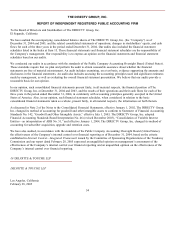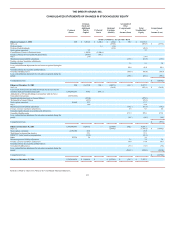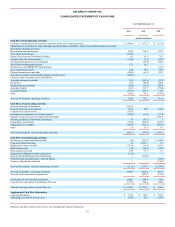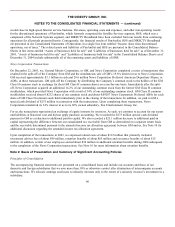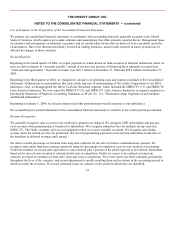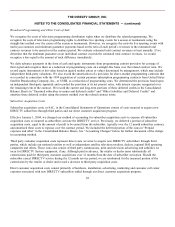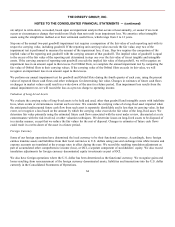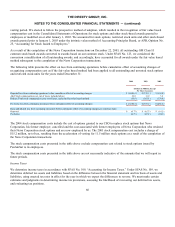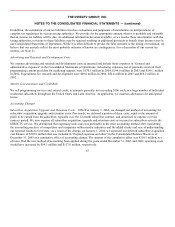DIRECTV 2004 Annual Report Download - page 70
Download and view the complete annual report
Please find page 70 of the 2004 DIRECTV annual report below. You can navigate through the pages in the report by either clicking on the pages listed below, or by using the keyword search tool below to find specific information within the annual report.
THE DIRECTV GROUP, INC.
NOTES TO THE CONSOLIDATED FINANCIAL STATEMENTS — (continued)
Use of Estimates in the Preparation of the Consolidated Financial Statements
We prepare our consolidated financial statements in conformity with accounting principles generally accepted in the United
States of America, which requires us to make estimates and assumptions that affect amounts reported herein. Management bases
its estimates and assumptions on historical experience and on various other factors that are believed to be reasonable under the
circumstances. Due to the inherent uncertainty involved in making estimates, actual results reported in future periods may be
affected by changes in those estimates.
Reclassifications
Beginning in the fourth quarter of 2004, we report payments in transit drawn on bank accounts at financial institutions where we
have no cash on deposit in “Accounts payable” instead of our previous practice of deducting these payments in transit from
“Cash and cash equivalents.” Payments in transit were $25.3 million at December 31, 2004 and $59.4 million at December 31,
2003.
Beginning in the third quarter of 2004, we changed the categories of operating costs and expenses included in the Consolidated
Statements of Operations to a presentation that adds clarity and ease of understanding of the results of operations of our DTH
businesses. Also, we disaggregated the Direct-To-Home Broadcast segment, which included the DIRECTV U.S. and DIRECTV
Latin America businesses. We now report the DIRECTV U.S. and DIRECTV Latin America businesses as separate segments as
provided by Statement of Financial Accounting Standards, or SFAS, No. 131, “Disclosures about Segments of an Enterprise
and Related Information.”
Beginning on January 1, 2004, we allocate pension and other postretirement benefit expenses to our subsidiaries.
We reclassified prior period information in the consolidated financial statements to conform to the current period presentation.
Revenue Recognition
We generally recognize sales as services are rendered or products are shipped. We recognize DTH subscription and pay-per-
view revenues when programming is broadcast to subscribers. We recognize subscriber fees for multiple set-top receivers,
DIRECTV- The Guide, warranty services and equipment rental as revenue, monthly as earned. We recognize advertising
revenue when the related services are performed. We record programming payments received from subscribers in advance of
the broadcast as deferred revenues until earned.
We derive a small percentage of revenues from long-term contracts for the sale of wireless communications systems. We
recognize sales under long-term contracts primarily using the percentage-of-completion (cost-to-cost) method of accounting.
Under this method, we record sales equivalent to costs incurred plus a portion of the profit expected to be realized, determined
based on the ratio of costs incurred to estimated total costs at completion. Profits we expect to be realized on long-term
contracts are based on estimates of total sales value and costs at completion. We review and revise these estimates periodically
throughout the lives of the contracts, and record adjustments to profits resulting from such revisions in the accounting period in
which we make the revisions. We record estimated losses on contracts in the period in which they are identified.
61





